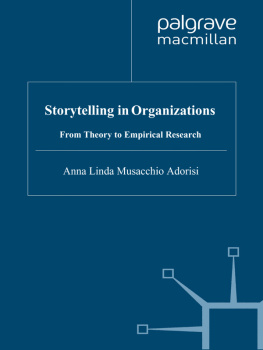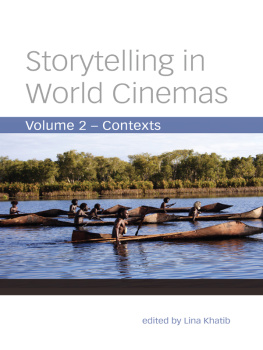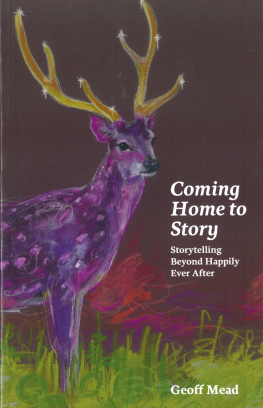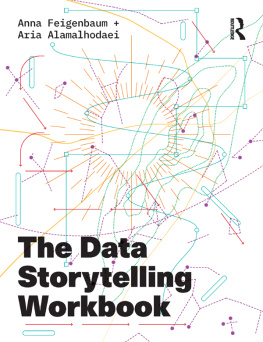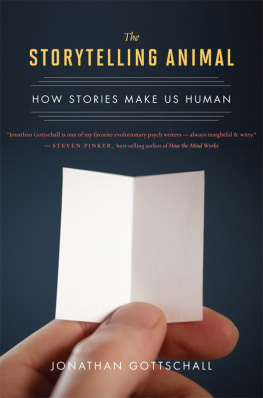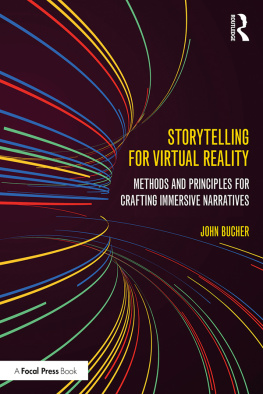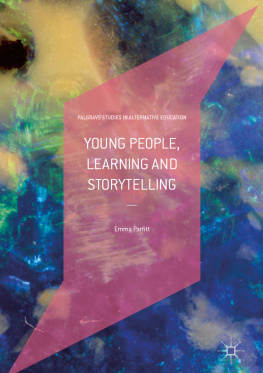Storytelling in Organizations
Storytelling in Organizations
From Theory to Empirical Research
Anna Linda Musacchio Adorisio


Anna Linda Musacchio Adorisio 2009
Foreword David Boje 2009
All rights reserved. No reproduction, copy or transmission of this publication may be made without written permission.
No portion of this publication may be reproduced, copied or transmitted save with written permission or in accordance with the provisions of the Copyright, Designs and Patents Act 1988, or under the terms of any licence permitting limited copying issued by the Copyright Licensing Agency, Saffron House, 6-10 Kirby Street, London EC1N 8TS.
Any person who does any unauthorized act in relation to this publication may be liable to criminal prosecution and civil claims for damages.
The author has asserted his right to be identified
as the author of this work in accordance with the Copyright,
Designs and Patents Act 1988.
First published 2009 by
PALGRAVE MACMILLAN
Palgrave Macmillan in the UK is an imprint of Macmillan Publishers Limited, registered in England, company number 785998, of Houndmills, Basingstoke, Hampshire RG21 6XS.
Palgrave Macmillan in the US is a division of St Martins Press LLC,
175 Fifth Avenue, New York, NY 10010.
Palgrave Macmillan is the global academic imprint of the above companies and has companies and representatives throughout the world.
Palgrave and Macmillan are registered trademarks in the United States, the United Kingdom, Europe and other countries.
ISBN-13: 9780230230682 hardback
This book is printed on paper suitable for recycling and made from fully managed and sustained forest sources. Logging, pulping and manufacturing processes are expected to conform to the environmental regulations of the country of origin.
A catalogue record for this book is available from the British Library.
A catalog record for this book is available from the Library of Congress.
10 9 8 7 6 5 4 3 2 1
18 17 16 15 14 13 12 11 10 09
Printed and bound in Great Britain by
CPI Antony Rowe, Chippenham and Eastbourne
I dedicate my work to the people to whom stories matter.
List of Illustrations and Table
Illustrations
Table
Foreword by David Boje
Anna Linda Musacchio developed new insights into the field of storytelling. It is a field complicated by many definitions. Some treat story and narrative as just the same thing. Most of the management domain is rather confused on this point. My personal view is that storytelling is a combination of narratives stuck in past-new, living stories with fuzzy beginning and no end in sight, and the antenarratives that shape the future. It is important to treat storytelling in its complexity. Anna Linda has taken the time to spell out how Russian Formalism developed its approaches to narrative. Most of the people in management do not have the time to revise Russian Formalism, European and American Structuralism, then sort through post-structuralism.
I believe the contribution of this book is in developing a theory of storytelling that is rooted in praxis (knowledge + action, as Paulo Freire would say). Storytelling is very much a social practice, one where official narratives dominate living stories.
It is Anna Lindas study of the everyday, living story-life of Wells Fargo that is so very revealing. The novelty of this banking conglomerate stands out in the study of everyday life. We get an up close and personal look at how an official narrative is branded onto, and dominates the living story, and replaces all narrative history of the branded banks.
I went on several of the interviews, and watched Anna Linda, do her storytelling research. She has a way of noticing the importance of a pause, a silence, an hesitation in the voice. There are these moments captured in her presence, in her transcripts, in her analysis that richly develop.
The book itself is on the storytelling, on how the storytelling is performed. It is all about the fragments of official narrative, and the living story (as I call it).
The book is about the relation of consolidated and rough stories. A consolidated narrative reduces living story to a blueprint. The rough stories are more living, more morphing, more spontaneous and alive. The two are in the same storytelling space. There are these stories such as The Tower, Anthonys Miracle, and Frank was not a banker that turn out to be pivotal in the analysis. They each reveal an emotional attachment. In my view, this illustrates what Bakhtin calls emotive-ethical. It is an emotional ethical connection, an interplay of two discourses, and it courses through the body and through being human. So much emotion is restricted, edited out of professional life, out of being bankers and customers. The emotive-ethical is an important analysis. It may be the key to unlock the tangle of banking, its mess-making, in the global recession. Consumption and banking are emotional, not just rational, and this has ethical importance. I think what is going on in Anna Lindas work is that there is an answerability revealed in a pause, an extra breath.
Consolidated narratives are socially organized and socially plotted. Rough stories, on the other hand, are more akin to what I have called antenarratives. It is important to say here, that the pole of rough storytelling does not always coincide exactly with antenarrative. Antenarrative covers both what exists before narrative and counternarrative. As Anna Linda explains, counternarratives can be very organized and structured as well, and follow the same patterns of narratives (p. 132). Her work focuses on antenarrative in the notation that excludes counternarrative.
The core of Anna Lindas research contribution must be detected, in fact, in the recognition of the ambivalence of storytelling acts, which witness a constant movement between the consolidated, socially plotted narratives, and the rough and unfinished fragments (antenarrative). Life is in between and social organization is in between narrative fossils and what is rough and wild story.
The book, then is this exploration of interplay between consolidated narrative and rough story. For example, there are more rough fragments in the accounts of the bankers of the former First National Bank of Dona Ana. The bankers of First National tell First National now. And as Anna Linda points out, it is an account of the past made now, while the Wells Fargo bankers tell Wells Fargo in the same moment. This idea that the account of the present I made now in expression, in storytelling, is an important contribution. It reveals that narrative without context is a kind of cultural ignorance. In being able to sort context implications into the telling and listening, storytellers develop the kind of competence which in Walter Benjamin days is lost, dead, or just a forgotten skill of storytelling in modern organizations.
It was my distinct pleasure and honor to work with Anna Linda Musacchio in her research, to go on field adventures into banking in the Wild West of New Mexico. It was awesome to see her extend Russian Formalism, incorporate new ideas of consolidated and rough and wild telling, and give new insight into banking. It is a good read, and a book that has a lasting contribution. David M. Boje
Acknowledgments
I want to thank Professor Jedlowski who supported this project when accepting to become the supervisor of my thesis. Who knows the story, is aware of the fact that this work wouldnt have been written without this consent.
Next page
